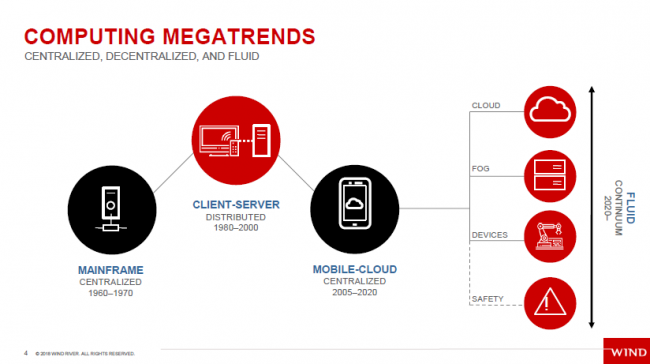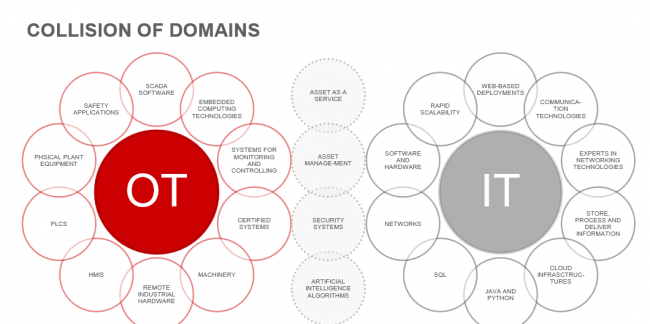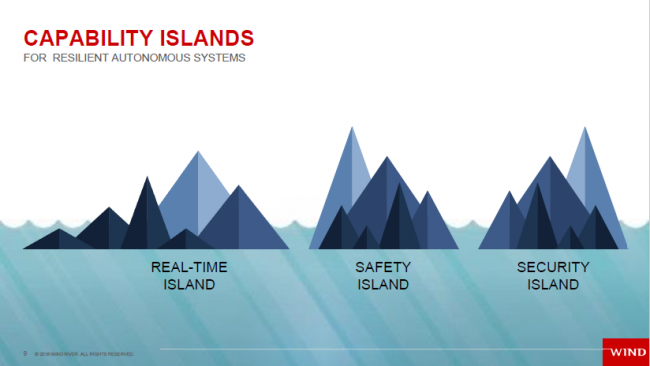

For the first time Wind River participated as a global sponsor at the recent ARC India Forum. I was curious to know how the company views digital transformation and how their journey has been. I listened keenly to the keynote address by Ricky Watts, Director, Industrial Solutions, Wind River. Presented here are some of the highlights.
Wind River looks at digital transformation through the lens of embedded real-time systems. Changes and upgrades have to be implemented carefully so that there is no loss in productivity. He said that evolving market demands impact the business models, which are being swept by two huge waves – the generational upgrade model and a software-defined autonomous world. There’s a collision between the past and the present when owners want legacy assets to move forward with new technologies; and this has to be carefully balanced. From a legacy perspective, assets that are reaching end of their lifecycle are costly to maintain and relatively inflexible, so there’s a requirement to modify/upgrade the infrastructure. At the same time there are cloud-based technologies, the software-defined autonomous world, and the innovation and direction it is heading toward.

Mr. Watts explained how computing megatrends that are centralized, de centralized, and fluid are reshaping business structures. From a compute perspective it started with a mainframe, then to the client server architecture, and then moved to the cloud and the edge (fog architecture). Specific things need to be done within the compute environment; so we should be able to use compute wherever it exists. In this context he spoke about fluid computing that connects in all directions - north to south and east to west.
There is more integration and “collision” between the IT and OT domains, he said. In the IT sector there has been rapid innovation. In his perspective, IT is more about connecting people and devices to the cloud. If there’s an interruption it is usually momentary and can be set right; but the OT environment is very different. When devices and things are connected to processes there can be no lapses in terms of time, safety, regulations etc. So, it is vital to have OT-IT convergence at the edge of the network.
Expanding on the convergence aspect he spoke about safety systems, devices, fog, cloud; and that all these have to be on a compute continual. He spoke about the legacy challenges of industrial systems (obsolescence, interoperability, outdated security features, lack of computing power etc.) and the benefits that cloud computing (agile and more scalable) offers. Another major benefit of cloud computing is disaggregation of the hardware and software applications, which allows more flexibility in resource deployment.

Capability islands (real-time, safety, security) that are interconnected are needed to build resilient autonomous systems. Increased connectivity raises a huge and ongoing security challenge. It is vital to create a secure environment. At Wind River, software is secured through access control; and there is platform capability to lock the hardware. So unless one has the key to the hardware, the software

cannot be accessed. Another important requirement is the speed of reaction in real time to threats. Mr. Watts said that this is a changing world where cobots (robots and people) work in the same environment, so the characteristics of safety change and this coexistence requires certification. So the operational and infrastructure layers must be restructured to allow this island to coexist with the other islands and create an interconnected fabric.
From a real-time perspective of safety and certification he spoke about Linux and VxWorks being deployed in the aerospace and automotive industries. The new VxWorks converged platform is a hypervisor technology that allows time and space partitioning. Through this you can view legacy devices, cloud compute and extend it out, without losing sight of things that require attention. He went on to speak about Titanium Control (industrial cloud platform) launched about a year and a half ago. This was re-engineered to be highly available, high performance, flexible, and low latency. It supports multiple functions and platforms and within that the OT paradigm comes through.
His presentation made it clear that digital transformation must be carefully planned and new systems must be deployed only after ensuring the safety and security aspects. OT-IT convergence is vital to synchronize and streamline processes to achieve operational excellence.

